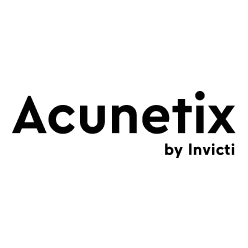Using vulnerable or outdated software components remains one of the most widespread cybersecurity risks in modern web application development. It’s a key category in the OWASP Top 10 (A06:2021), highlighting the dangers of relying on third-party components that contain known security vulnerabilities or are no longer supported. Without clear visibility, patch management, and proactive controls, these weak links can expose your application stack to serious attacks—from remote code execution to unauthorized access and reputational damage.
Let’s explore why these software supply chain risks are so critical—and how combining sound inventory management with dynamic security testing helps you prioritize the components that matter most.
What are vulnerable and outdated components?
These are third-party libraries, backend frameworks, or external software packages that are insecure by design, no longer maintained, or contain common vulnerabilities like cross-site scripting (XSS), SQL injection, or server-side request forgery (SSRF). Examples span both client-side and server-side technologies and include:
- Open-source libraries written in Java, Python, PHP, or JavaScript
- Middleware and server plugins
- APIs and service connectors
- Legacy dependencies baked into business logic
Once integrated, many of these components go unmonitored for long periods—leaving your web application exposed even after security advisories or patches are released.
Examples of real-world incidents caused by vulnerable or outdated components
A widely cited case involved Apache Struts. In 2017, attackers exploited an unpatched vulnerability that led to a major data breach, despite available fixes. Other examples include:
- Using a vulnerable version of Log4j that enabled the Log4Shell remote code execution exploit
- Running outdated jQuery libraries known to be affected by XSS flaws
- Keeping legacy WordPress or Drupal plugins with insecure design patterns
- Leaving APIs exposed via unpatched modules or insecure configurations
Supply chain attacks can also arise from trust-based assumptions. Take the Polyfill.io incident, where a previously benign dependency was compromised and used to serve malicious JavaScript across thousands of sites—directly impacting data integrity and increasing the attack surface.
Why it’s essential to secure outdated components
There are valid reasons software developers may delay updates: new versions often require retesting functionality and confirming compatibility. However, when a component has known vulnerabilities, delay means exposure.
Here are key risks of using vulnerable or outdated components:
- Exploitability: Hackers routinely scan for known-vulnerable versions with published CVEs.
- Automation: Bot-driven penetration testing tools actively target weak components.
- Unauthorized access: Security misconfigurations or logic flaws in components can bypass authentication entirely.
- Compliance violations: Unpatched issues may breach frameworks like PCI DSS, HIPAA, or internal policies.
- Cascading failures: One compromised component can ripple across systems and affect data integrity.
- Persistent threats: Malicious actors may embed payloads that maintain long-term access.
A robust patch management process and accurate software composition analysis (SCA) are critical to reduce these risks.
How to manage vulnerable and outdated components effectively
Proactive security means addressing component risk before it becomes a threat. That starts with full visibility into what you’re running—and whether it’s truly dangerous in a live environment. Follow these best practices to minimize your risk:
- Maintain a full SBOM: Keep your software bill of materials current to track all dependencies.
- Use SCA tools for visibility: While static analysis flags outdated packages, it doesn’t assess runtime risk.
- Adopt a DAST-first approach: Dynamic testing shows whether component vulnerabilities are exploitable in practice.
- Automate patching: Where possible, let your systems automatically apply security patches for common components.
- Integrate security into CI/CD: Include vulnerability scanning and mitigation checks early in the build pipeline.
- Apply virtual patching via WAF: Web application firewalls can shield sensitive data while patches are rolled out.
Why DAST-first makes the difference
Many organizations rely on SCA tools alone. While important, these tools can flood teams with unactionable alerts. A DAST-first model flips the script by focusing on component vulnerabilities that are visible and exploitable in the real world. Here’s why being DAST-first works so well:
- Focuses on real threats: DAST detects what hackers would actually see—running APIs, server-side components, and misconfigurations.
- Validates exploits: With proof-based scanning, tools like Acunetix by Invicti confirm whether a vulnerability is real, saving time in triage.
- Reduces noise: Less time wasted chasing false positives means faster, more targeted mitigation.
- Helps developers fix faster: Developers get actionable, reproducible results tied to specific component weaknesses.
A DAST-first approach also supports secure coding by surfacing risky behaviors early—before vulnerable components become embedded in production environments. Combined with SCA, it ensures that you’re covering both theoretical risks and real-world threats—from insecure APIs to vulnerable PHP packages and Java libraries that power critical backend services.
Final thoughts
Outdated or insecure components pose a serious threat to cybersecurity and data integrity—but they don’t have to derail development. By maintaining a clear inventory, automating your patch management process, and focusing on dynamic, real-world exposure through DAST, your team can protect against data breaches, unauthorized access, and other security risks without sacrificing functionality or velocity.
When DAST, SCA, and inventory management work together, you gain comprehensive protection—without drowning in noise. That’s the path to a more secure, resilient application environment.
Get the latest content on web security
in your inbox each week.


